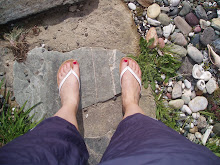Etiology:
Tennis elbow is a repetitive strain injury caused by recurrent twisting and jarring movements through the lateral forearm and elbow. Unlike its name suggests, it is not necessarily caused by playing tennis (O'Young, Young & Stiens, 2002). These initial movements cause minute tears in the muscular tissue and tendon fibres which have a cumulative effect resulting in pain from chronic overuse. Tendinitis is the initial inflammation of the forearm extensors and lateral epicondyle, which then develops into lateral epicondylitis (Shultz, Houglum & Perrin, 2005) as described below in Pathogenesis. Risk factors for the development of tennis elbow/lateral epicondylitis include middle age groups (30 - 50 year olds), professional athletes who use a racquet, bodybuilders and occupations such as construction and carpentry (Kraft, 2009).
Pathogenesis:
Once the tears have occurred, the continued repetition of jerky movements aggravates this tissue damage, resulting in inflammation through the radial portion of the forearm, restricting movement and causing pain (Cyriax, J., 1936). The radial tendon continues to rub against the inflamed periosteum of the lateral epicondyle, and according to Davies (2006) causes further swelling, pain when resting, restriction of movement and weakness through the affected forearm in the long term.
Morphology:
Once lateral epicondylitis has been triggered off by the initial tendinitis, morphological and histological changes occur. The fibroblasts and collagen fibres produced as part of the body's healing mechanism in response to injury, lay down a new extracellular matrix to knit together the tendinous tissues (Shultz et al, 2005). The collagen fibres then strengthen and harden into a tougher matrix of granulation tissue containing more fibroblasts, blood vessels, collagen and fibrinogen leading to 'scar' tissue (Wikipedia, 2009) at the site of the lesion.
Epidemiology:
Incidence - Tennis elbow/lateral epicondylitis affects 4-7 individuals per 1,000 patients as seen by a GP annually (Selby, 2004).
Prevalence - As indicated by research conducted by Allander (1974, cited in Pecina, 2004), tennis elbow/lateral epicondylitis was found to exist in 1 - 5% of a population of 15,268 individuals within an age range of 31 - 74 years.
References:
Cyriax, J. (1936) The Pathology and Treatment of Tennis Elbow (Electronic Version). The Journal of Bone and Joint Surgery, Inc., 18, pp. 921 - 940.
Davies, C. (2006) Self-Treatment of Tennis Elbow, Golfer's Elbow, Lateral Epicondylitis, Medial Epicondylitis, Elbow Tendinitis, Elbow Bursitis: The Trigger Point Therapy Workbook. Retrieved the 30th March, 2009 from: http://www.triggerpointbook.com/tennisel.htm
O'Young, B., Young, M. & Stiens, S. (2002) Physical Medicine and Rehabilitation Secrets. Philadelphia: Elsevier Health Sciences, pg. 267.
Shultz, S., Houglum, P. & Perrin, D. (2005) Examination of Musculoskeletal Injuries. Illinois: Human Kinetics, p. 280.
Wikipedia. (2009) Wound Healing. Retrieved the 30th March, 2009 from: http://en.wikipedia.org/wiki/Wound_healing

No comments:
Post a Comment